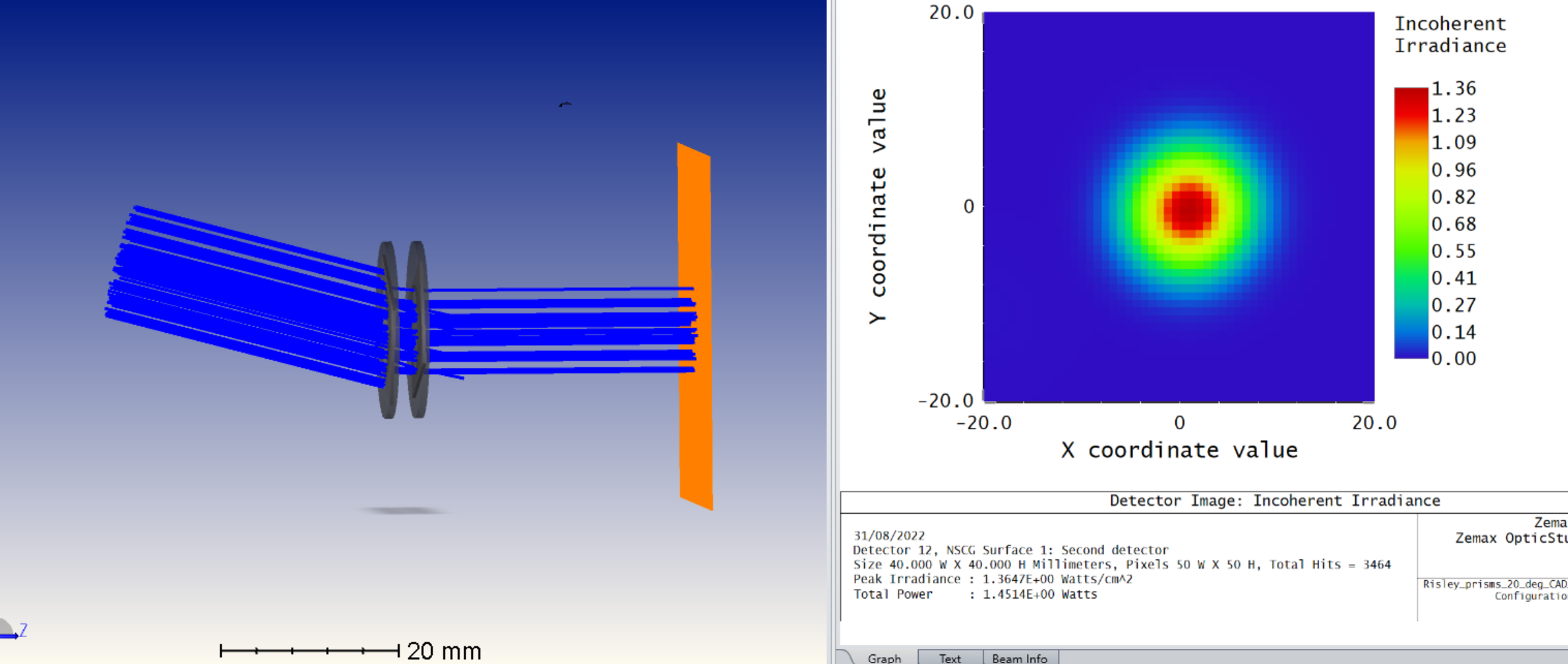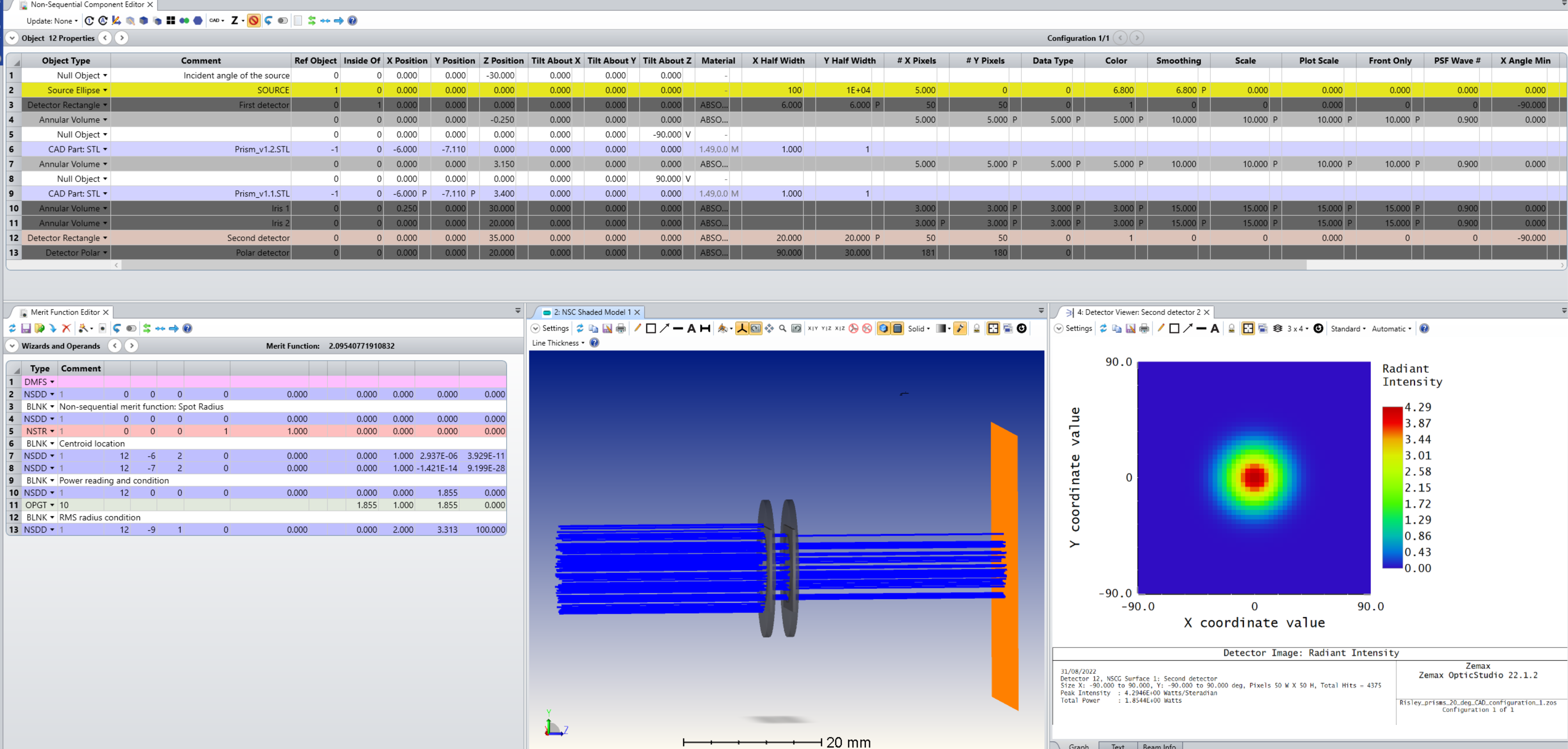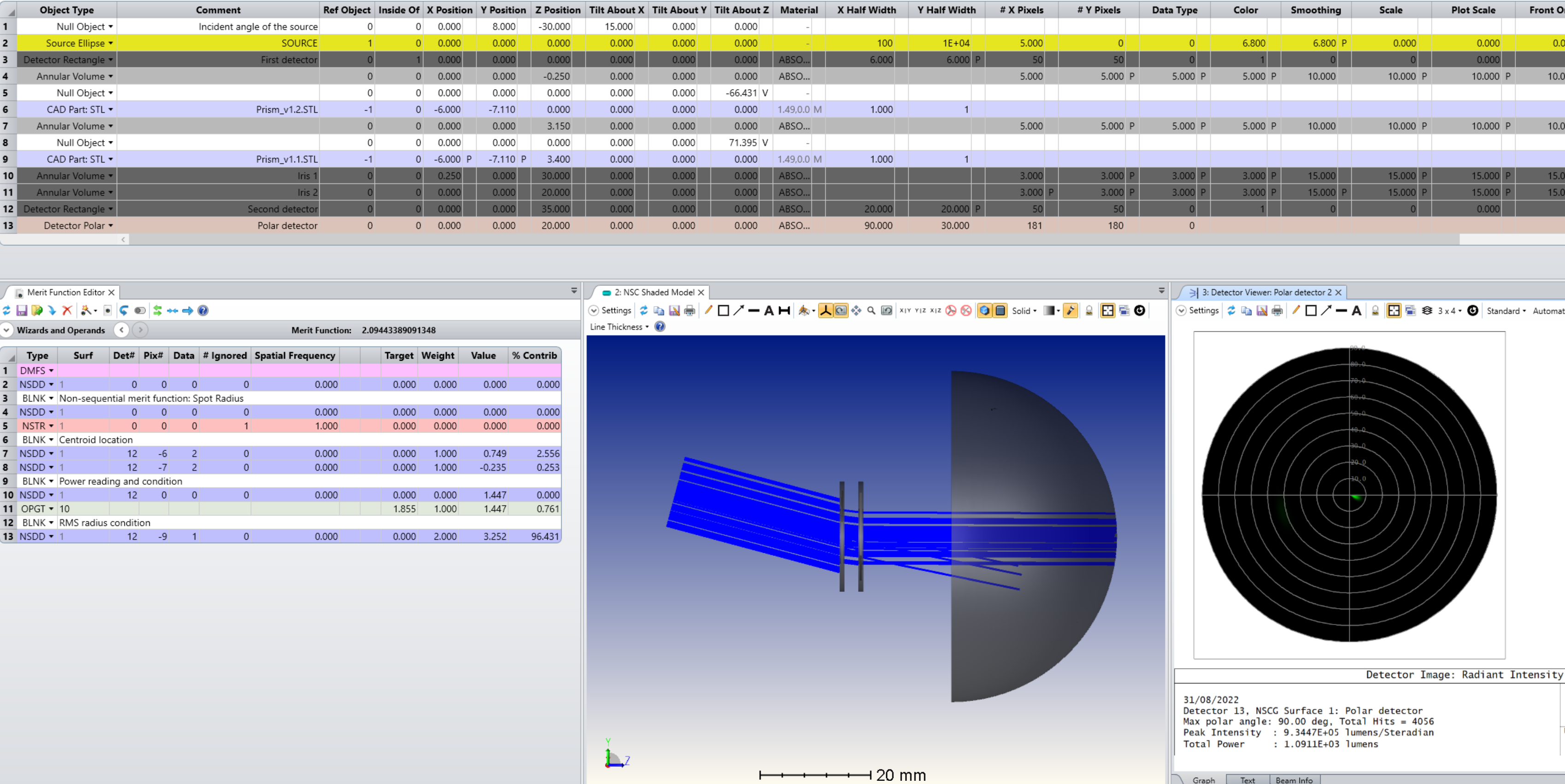Hi all!
My system is a two prism system in Risley configuration:

I need to find the exact prisms orientation in order to redirect light straight at the exit. I numerically calculated them, but ray trace tells me I am slightly off.
In order to check it, I am using a polar detector and my goal is to have theta=0 (first column of the extracted .txt file full with power value).
I have built a merit function , trying to follow what is encompassed in here and replacing the polar detector with a rectangular detector: https://support.zemax.com/hc/en-us/articles/1500005576602-How-to-optimize-non-sequential-optical-systems
My system has become:

At zero degrees incident field, the angular irradiance show 0,0 which seems to be correct:

If I tilt the input beam of about 15 deg, after optimization the polar detector shows still some misalignement:

What could be the problem?
Thank you for your help,
best,
Giulia.



